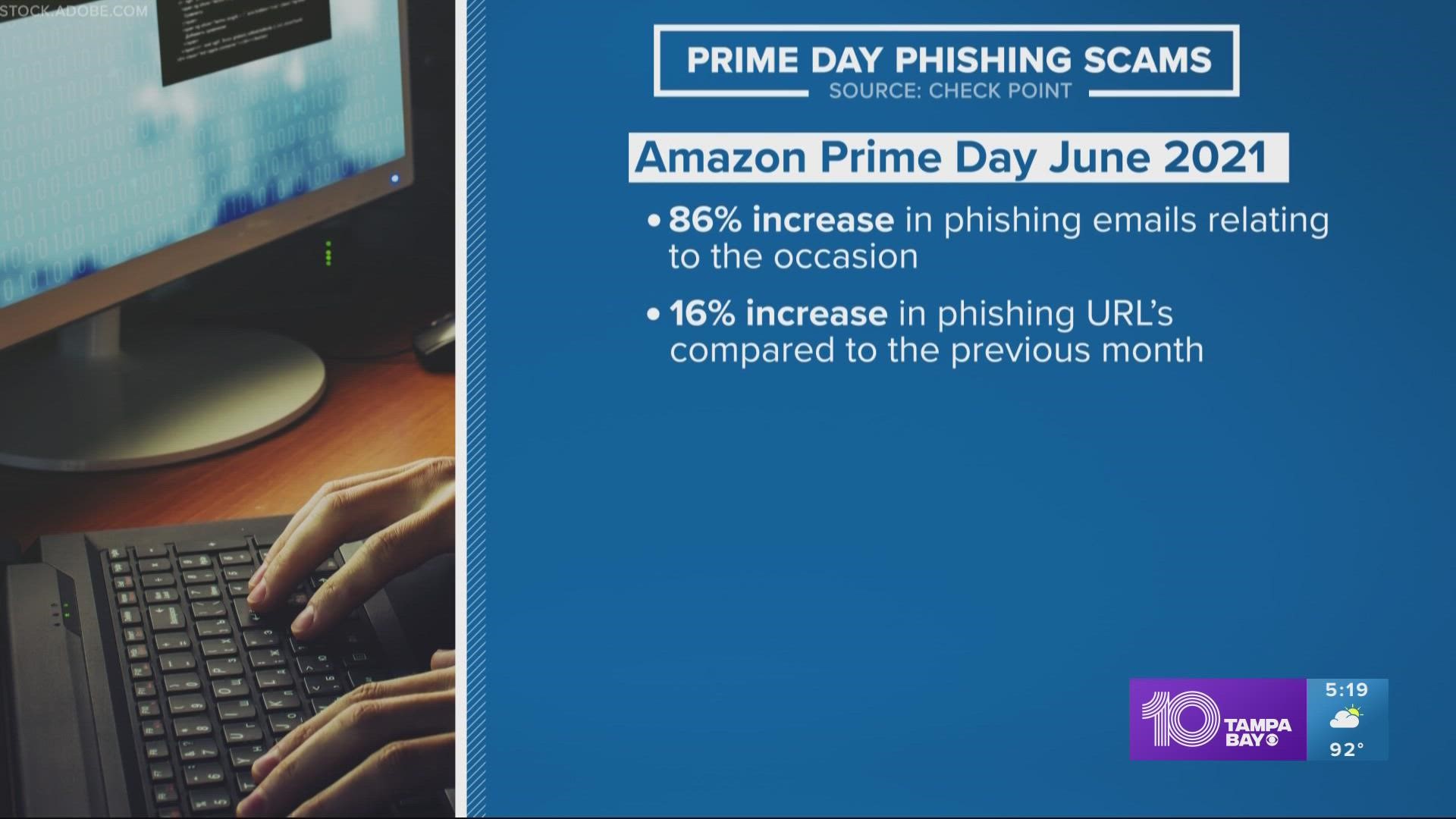ST. PETERSBURG, Fla. — Prime Day can be a prime time for phishing. You're going to want to be extra careful when you're opening emails in your inbox.
Last year, there was an 86 percent increase in phishing emails during the month of Amazon Prime Day. There was also a 16 percent increase in phishing URLs compared to the previous month.
Amazon is one of the most impersonated domains on the internet. According to Checkpoint, there were almost 1,900 new domains related to the term "Amazon" created just last month, and 9.5 percent were found to be risky — either malicious or suspicious.
“Anywhere in between 85 and 95 percent of all breaches, the ones that you hear about have started with some kind of email compromise whether it's spam email or malicious attachments,” Checkpoint Head of Engineering for the Americas Tony Sabaj explained. ”It's really the start of a lot of hacks and breaches is really with email so people need to be vigilant.”
Nick Flowers is a consumer dispute expert for Chargebacks 911. He says some of the top things they see are fraudulent emails and text messages.
“We always suggest going to your account, checking online,” Flowers said. “Definitely don’t enter credentials through the text message and really we wouldn’t recommend hitting the link either.”
Sometimes these are even more obvious to spot when you get them as a text. You can tell by the sender's information that they're not legit.
Sabaj says you should look for shortened site links in an email and copy them into a tool like unshorten.it or unshorten.me to see a full site address and look for anything suspicious.

